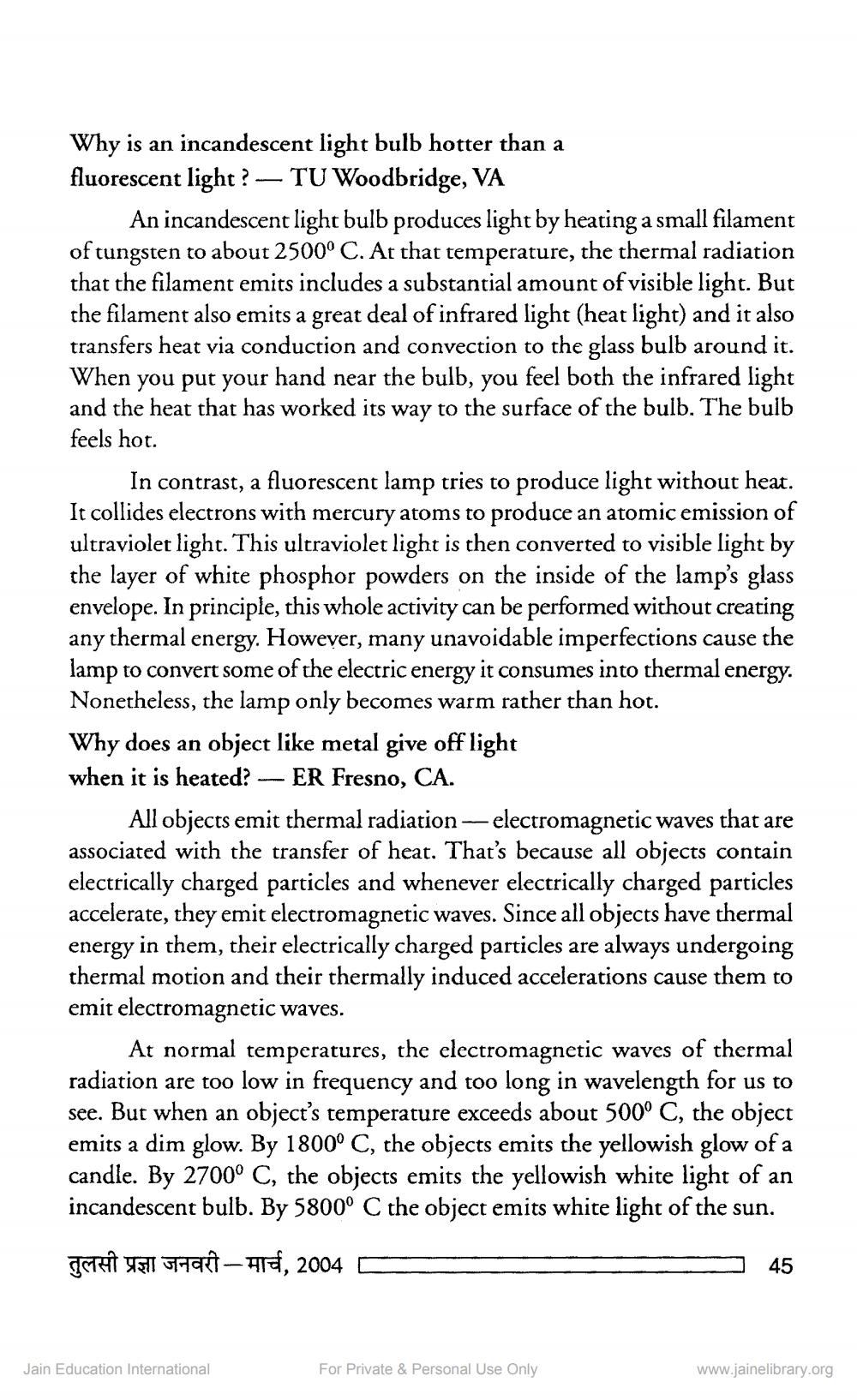________________
Why is an incandescent light bulb hotter than a fluorescent light ? — TU Woodbridge, VA
An incandescent light bulb produces light by heating a small filament of tungsten to about 2500° C. At that temperature, the thermal radiation that the filament emits includes a substantial amount of visible light. But the filament also emits a great deal of infrared light (heat light) and it also transfers heat via conduction and convection to the glass bulb around it. When you put your hand near the bulb, you feel both the infrared light and the heat that has worked its way to the surface of the bulb. The bulb feels hot.
In contrast, a fluorescent lamp tries to produce light without heat. It collides electrons with mercury atoms to produce an atomic emission of ultraviolet light. This ultraviolet light is then converted to visible light by the layer of white phosphor powders on the inside of the lamp's glass envelope. In principle, this whole activity can be performed without creating any thermal energy. However, many unavoidable imperfections cause the lamp to convert some of the electric energy it consumes into thermal energy. Nonetheless, the lamp only becomes warm rather than hot. Why does an object like metal give off light when it is heated? — ER Fresno, CA.
All objects emit thermal radiation - electromagnetic waves that are associated with the transfer of heat. That's because all objects contain electrically charged particles and whenever electrically charged particles accelerate, they emit electromagnetic waves. Since all objects have thermal energy in them, their electrically charged particles are always undergoing thermal motion and their thermally induced accelerations cause them to emit electromagnetic waves.
At normal temperatures, the electromagnetic waves of thermal radiation are too low in frequency and too long in wavelength for us to see. But when an object's temperature exceeds about 500° C, the object emits a dim glow. By 1800° C, the objects emits the yellowish glow of a candle. By 2700° C, the objects emits the yellowish white light of an incandescent bulb. By 5800° C the object emits white light of the sun.
ISTAT UIT HA-777, 2004 C
45
Jain Education International
For Private & Personal Use Only
www.jainelibrary.org




